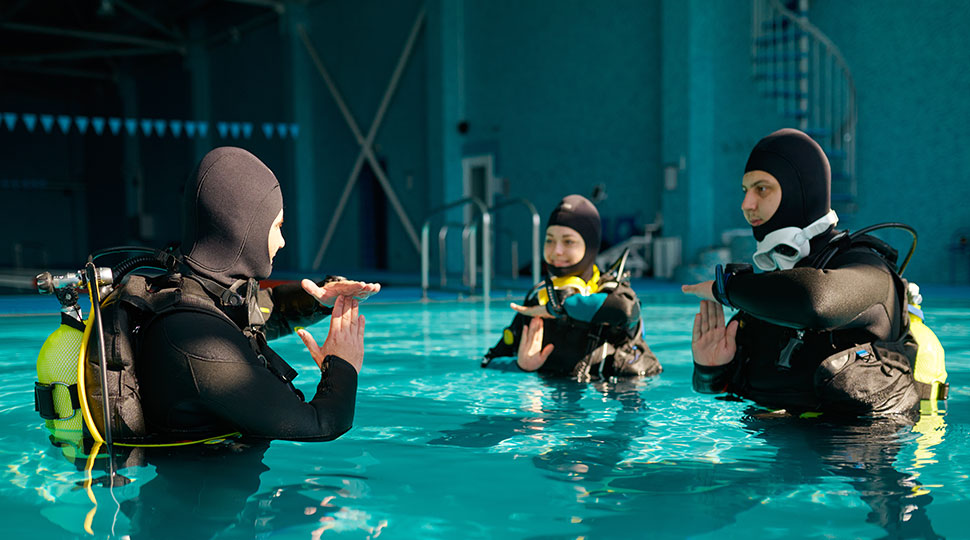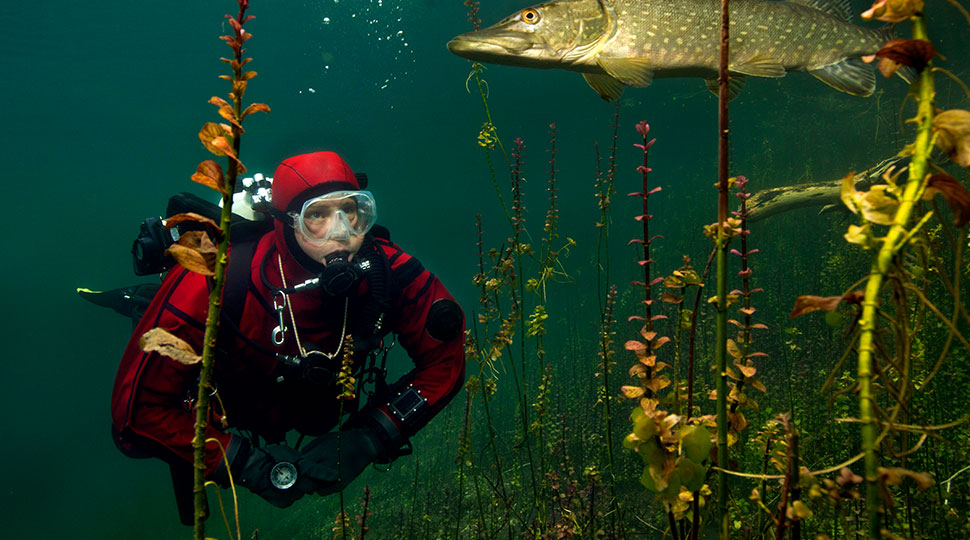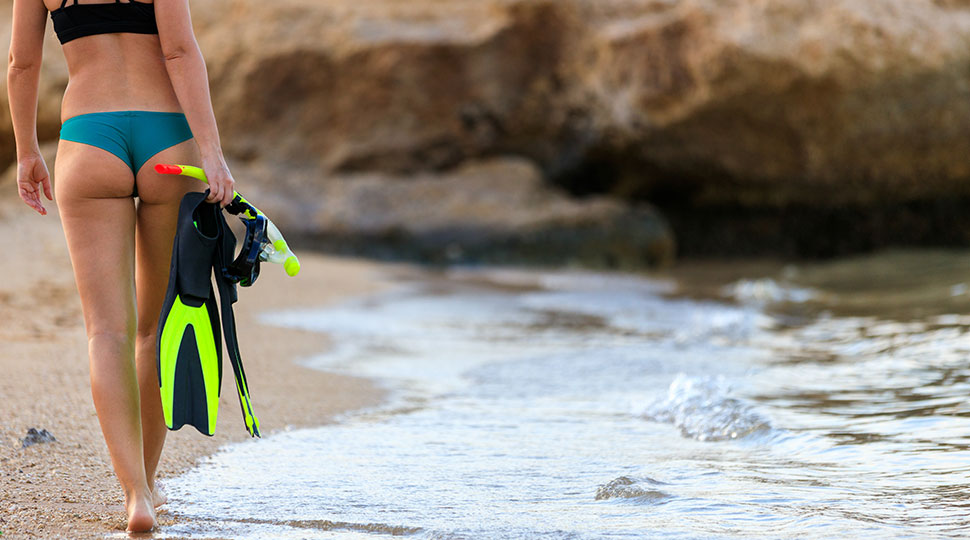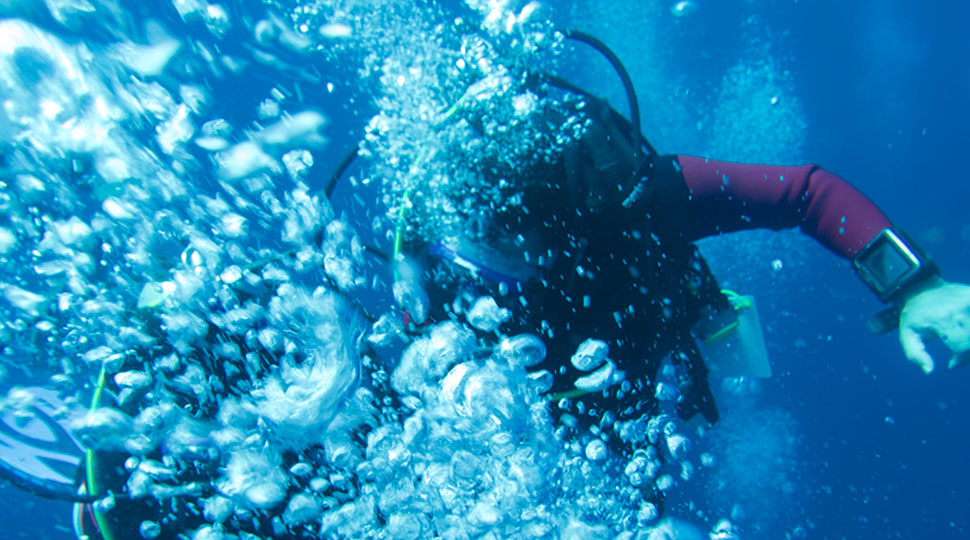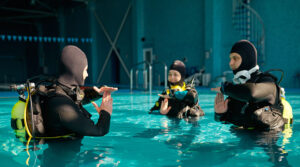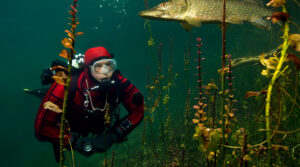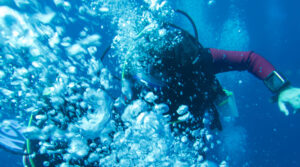The Great Barrier Reef diving scene is one of the most breathtaking experiences any diver can have. The reef stretches over 2,300 kilometers off the coast of Queensland, Australia, and it’s home to an incredible array of marine life.
From the moment you descend into the crystal-clear waters, you’re surrounded by a kaleidoscope of colors, with fish swimming alongside you and coral formations towering above.
For many years, the Great Barrier Reef has been a popular destination for scuba divers from around the world. The warm waters and vibrant coral reefs provide an ideal environment for spotting a vast variety of fish, turtles, rays, and even sharks. From novice to experienced divers, there’s something for everyone on the GBR.
Whether you’re looking to spot a sea turtle gliding through the water or take in the stunning vistas of the reef from above, the Great Barrier Reef has it all.
Planning a Diving Trip to the Great Barrier Reef
If you’re planning a diving trip to the Great Barrier Reef, here are some tips to help you prepare:
Make sure you have the necessary certification and equipment. As a responsible diver, it’s crucial to ensure you’re properly trained and equipped for your adventure.
- Research your dive sites and plan your itinerary accordingly. The Great Barrier Reef is vast, with numerous dive sites to explore. Understanding which sites are best suited to your experience level will help ensure a safe and enjoyable trip.
- Book accommodations in advance, especially during peak season. The GBR is a popular destination, and finding the right accommodation can be challenging if you don’t plan ahead.
- Pack layers of sunscreen, sunglasses, and sunhats for protection from the harsh Australian sun. It’s easy to get caught up in the excitement of your diving adventure, but remember to stay safe and protected from the sun’s strong rays.
In addition to these tips, consider the following:
- Start by choosing a reputable dive operator or liveaboard boat that offers guided dives and expert knowledge of the reef.
- Take advantage of local tours and excursions to explore the surrounding areas, including islands and coastal towns.
- Be mindful of your impact on the reef and its inhabitants. As a responsible diver, it’s crucial to respect the environment and follow all guidelines for diving in marine protected areas.
Top Dive Sites
The Ribbon Reefs
These reefs are known for their vibrant coral and diverse marine life.
They’re also a popular spot for spotting sharks and rays.
As you descend into the crystal-clear waters, you’ll be surrounded by schools of fish swimming alongside you.
The Cod Hole
This dive site is famous for its giant groupers and schooling fish.
It’s an excellent location for photographers looking to capture stunning underwater shots.
Imagine yourself swimming alongside a school of hundreds of fish, their scales shimmering in the sunlight filtering down from above.
The SS Yongala
This historic shipwreck is considered one of the best wreck dives in the world.
It’s home to a wide variety of marine life, including sharks, rays, and turtles.
As you explore the wreck, you’ll be struck by the sheer size and grandeur of this underwater monument.
The Ribbon Reefs' "The Gardens"
This site is known for its vibrant coral gardens and diverse marine life.
It’s an excellent location for spotting fish and other small creatures.
With each dive, you’ll discover new and exciting things about this unique ecosystem.
The Ribbon Reefs' "The Bommies"
These reefs are known for their unique formations and diverse marine life.
They’re also a popular spot for spotting sharks and rays.
As you swim through the maze of coral and bommies, you’ll feel like you’re exploring an underwater city.
Conservation Efforts
Despite the incredible beauty of the Great Barrier Reef, it’s facing many challenges. Climate change is causing coral bleaching, and pollution from land-based activities is harming marine life.
In response to these issues, conservation efforts are underway to protect the reef.
These initiatives include reducing plastic waste, restoring damaged habitats, and promoting sustainable fishing practices.
The Great Barrier Reef Marine Park Authority is working tirelessly to protect the reef from human impact.
They’re implementing measures such as marine protected areas, restricted fishing practices, and education programs to raise awareness about the importance of conservation.
In addition to these efforts, many organizations are also working together to protect the Great Barrier Reef.
The Australian Government’s Reef Trust is providing funding for conservation projects and research initiatives. Local communities are also getting involved, with many businesses and residents taking steps to reduce their impact on the reef.
Planning a Diving Trip to the Great Barrier Reef
Safety Measures
Before you embark on your diving adventure, it’s essential to take certain safety measures into consideration:
- Make sure you have all the necessary certification and equipment.
- Always dive with a buddy, especially in the open ocean.
- Research your dive sites and plan your itinerary accordingly.
- Respect local regulations and guidelines for diving in the Great Barrier Reef.
Budget Considerations
When planning your trip to the Great Barrier Reef, it’s important to consider your budget. Here are some tips:
- Book accommodations in advance to get the best deals.
- Research different dive operators and compare prices for their services.
- Consider staying at an all-inclusive resort or liveaboard boat to save money on meals and accommodations.
Tips for Photographers
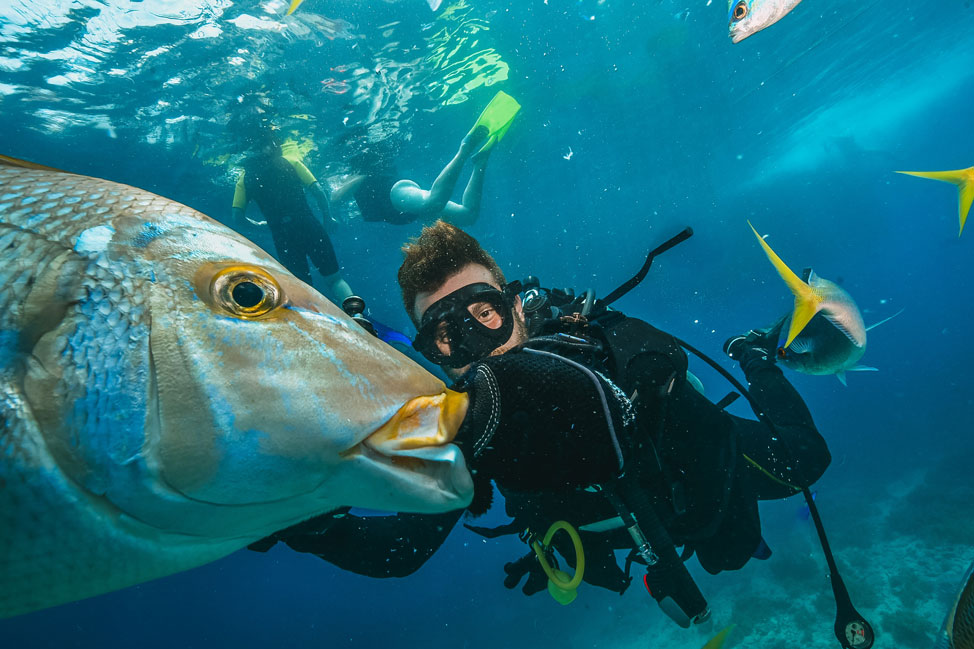
1. Bring the right equipment – A good underwater camera housing and strobe lights will help you capture stunning photos of the reef’s vibrant marine life.
2. Research your dive sites – Knowing what to expect at each site will help you plan your shots and make the most of your time underwater.
3. Dive with a buddy – Having a partner who is also interested in photography can be helpful in capturing certain shots, such as wide-angle photos of the reef or schools of fish.
4. Be patient – Photography often requires waiting for the right moment to capture a shot, so be prepared to spend more time underwater than you would on a casual dive.
5. Practice your skills – Like any skill, photography takes practice, so make sure to practice your diving and photography techniques before heading out to the Great Barrier Reef.
6. Respect Local Regulations – Be aware of local regulations regarding photography in marine protected areas or other sensitive ecosystems.
7. Bring Extra Batteries and Memory Cards – It’s always better to be safe than sorry, so make sure you have extra batteries and memory cards on hand in case you run out.
8. Plan Your Dive Schedule – Make sure you have enough time to capture all the shots you want without feeling rushed or pressured.
9. Be Aware of Your Environment – Remember that you are diving in a fragile ecosystem, so be mindful of your impact on the reef and its inhabitants.
10. Have Fun! – Photography is meant to be enjoyed, so don’t get too caught up in trying to capture the perfect shot. Relax and enjoy the experience.
The Safety Stop
The Great Barrier Reef is truly a breathtaking experience like no other, with its vibrant coral reefs and incredible diversity of marine life. As you descend into the crystal-clear waters, you’ll be surrounded by a kaleidoscope of colors, with fish swimming alongside you and coral formations towering above.
By following these tips, you can make the most of your diving trip to the Great Barrier Reef and capture stunning photos that will last a lifetime.
Whether you’re a seasoned diver or just starting out, the Great Barrier Reef has something for everyone. With its rich history, vibrant marine life, and stunning underwater landscapes, it’s an experience that you’ll never forget.

